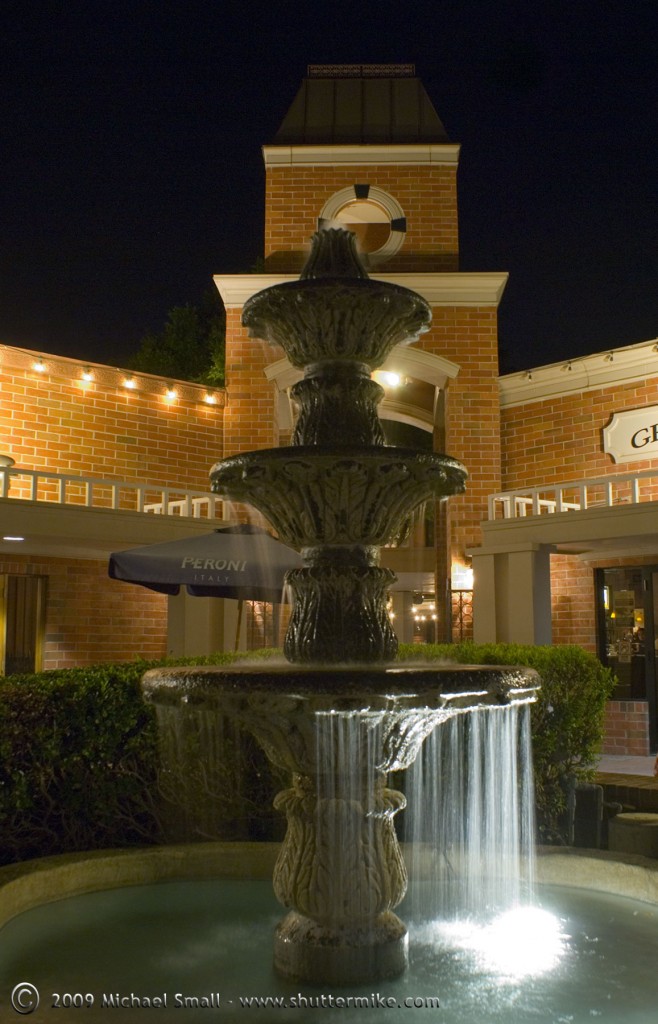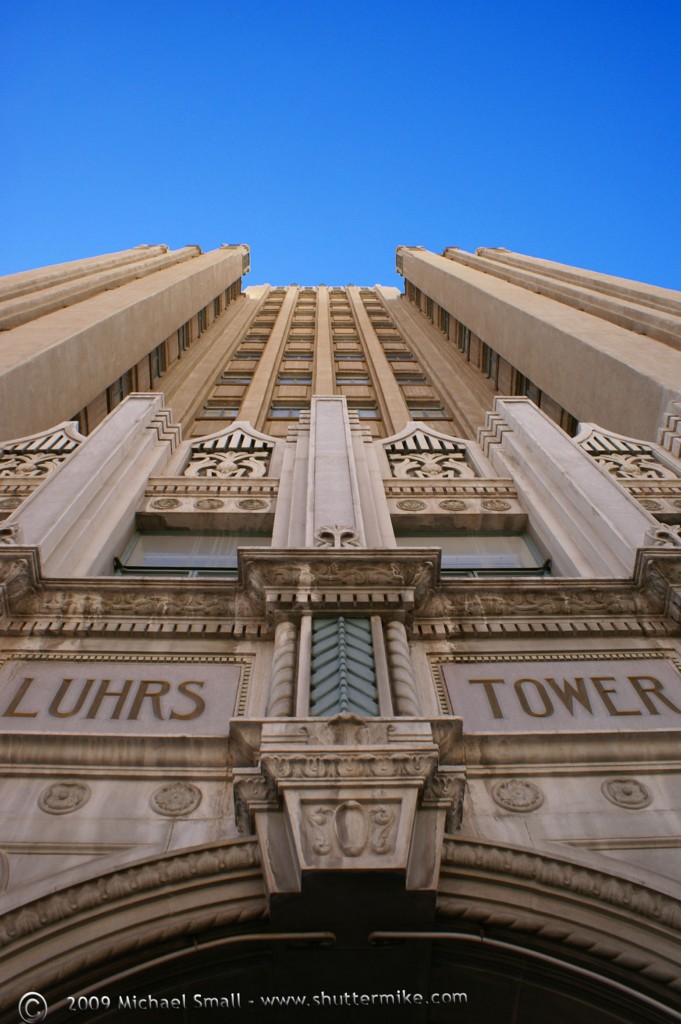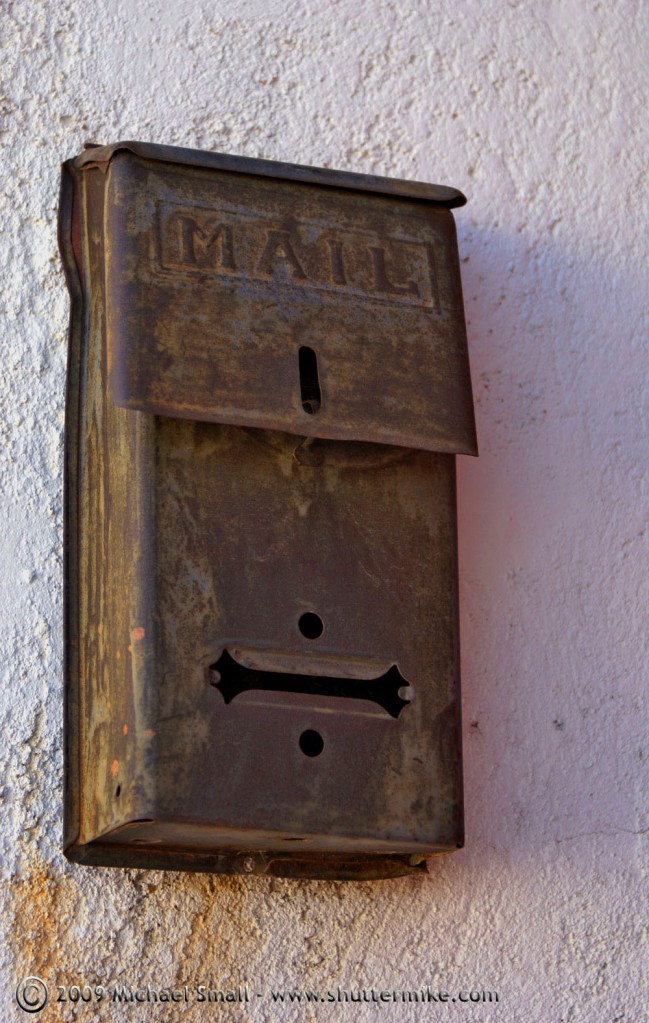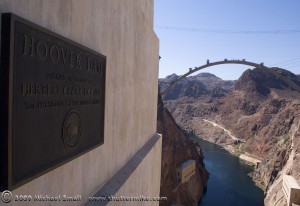
Hoover Dam holds back the Colorado River at the Arizona/Nevada border. By doing so it generates 4 billion kilowatt hours of electricity a year, enough to provide power to 1.3 million people annually. The structure is impressive with its 4.3 million cubic yards of concrete and Art Deco design aesthetic. Although traffic over the dam is often congested with people going to and from Las Vegas it is well worth parking the car and getting out to photograph the dam and its supporting structures. Aside from the dam, the surrounding landscape and Lake Mead, which was formed behind the dam, also offer some great photography opportunities. To avoid getting the quick tourist snap shots that often result from a trip to a monument such as Hoover Dam be sure to take your time to explore the details and possible shots.
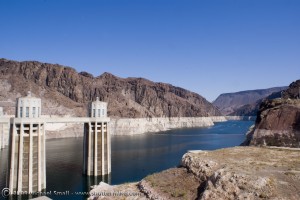
Hoover Dam intake towers and Lake Mead
f/22 – 1/40 sec – ISO 100 – Focal Length 18 mm
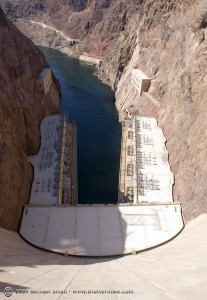
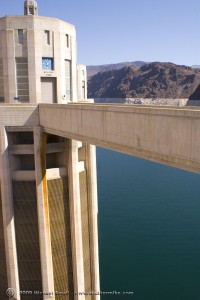
Left Image: Looking Down at the Colorado River from the top of the dam
f/ 10 – 1/125 sec – ISO 100 – Focal Length 18mm
Right Image: One of the intake towers and Lake Mead
f/ 9 – 1/160 sec – ISO 100 – Focal Length 20 mm
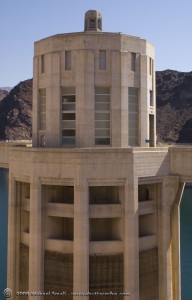
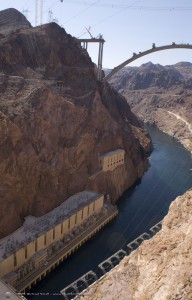
Left Image: One of the intake towers
f/ 14 – 1/80 sec – ISO 100 – Focal Length 30mm
Right Image: Looking Down at the Colorado River (the new highway bridge in the background)
f/ 10 – 1/160 sec – ISO 100 – Focal Length 18 mm
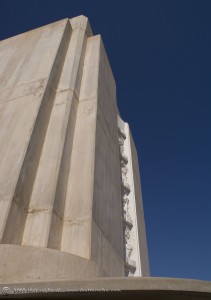
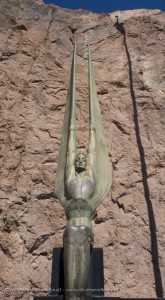
Left Image: Detail of the Art Deco style of Hoover Dam
f/ 8 – 1/40 sec – ISO 100 – Focal Length 18mm
Right Image: “Wings of the Republic” bronze statue
f/ 20 – 1/100 sec – ISO 100 – Focal Length 18 mm
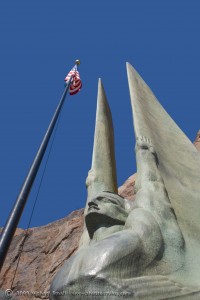
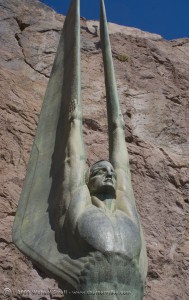
Left Image:”Wings of the Republic” bronze statue
f/ 16 – 1/125 sec – ISO 100 – Focal Length 35mm
Right Image: “Wings of the Republic” bronze statue
f/ 20 – 1/100 sec – ISO 100 – Focal Length 30 mm
As with any hobby, amateur photographers could easily go crazy buying all the latest and greatest photography gear. Have you ever seen an avid woodworkers home shop or a scrapbookers hobby room? They are filled with special tools and equipment designed to make the end result better. But does the latest laser guided table saw really result in better crafted furniture? Do the titanium sculpting scissors make a better laid out scrap book page?
The same questions can be asked of photography gear. Is it the photo gear that improves photography?
There are three factors that lead to a good photograph in my view.
- The equipment and gear used
- The technical knowledge of the photographer
- The artistic eye and ability of the photographer
Having all three is an asset for creating better photographs but not necessarily essential. In the end you can have the most expensive telephoto lens on the market today, the fanciest tripod, and a top of the line camera but if you do not know how to operate any of it or if you just do not have an artistic photographer’s eye none of it is going to produce better photography. It is not the gear alone that makes the photographer. In fact a talented photographer can often take a master shot with the simplest of photography gear.
All the latest and hottest gear is fun to have. But before spending a fortune equipping yourself spend some time improving your skills. Study the art of photography – formally or on your own – and practice, practice, practice. That will make you a better photographer who can then improve upon your art with all the great gear available.
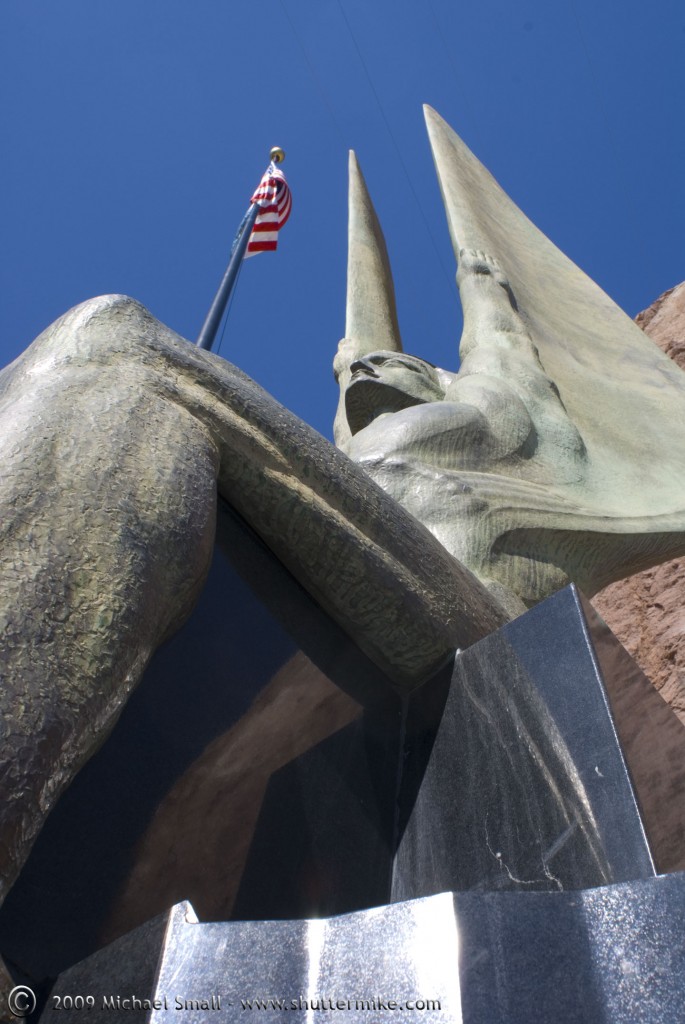
Winged Figures of the Republic
Hoover Dam, Nevada/Arizona Border
f/16 – 1/60 sec – ISO 100 – Focal Length 30 mm
If you have ever driven between Arizona and Nevada on your way to or from Las Vegas you are more likely than not familiar with Hoover Dam. Completed in 1936 as part of the original “economic stimulus” package the dam is nothing short of an engineering wonder. It’s size and grandeur make it almost difficult to imagine how it is man made, much less made almost 75 years ago.
This photograph is of the Winged Figures of the Republic bronze statues. They sit on the Nevada side of the dam and were designed by Norwegian artist Oskar J.W. Hansen.
In film photography ISO refers to the film’s sensitivity to light and is also called the film speed. The chemical makeup of the film is altered to either increase or decrease its sensitivity and speed. The lower the ISO number the slower and less sensitive the film is to light. Low speed film also results in less grainy photographs. The higher the ISO number the faster and more sensitive the film is to light. In simple terms that means in well lit situations, such as outdoors on a sunny day, you need a lower ISO film such as an ISO 100 and in less lit situations and action shots, such as indoors and sporting events, you need a higher ISO number such as 400.
So this may lead you to wonder why there is an ISO setting on your digital camera. There is no film to chemically alter and you either set it and forget it on auto or manually adjust your shutter speed and aperture to compensate for different lighting conditions and motion. So how does ISO fit into digital photography?
In a digital camera the film is replaced with the sensor. So ISO in a digital camera sets the speed and sensitivity to light of the sensor. Being able to adjust your ISO allows for expanded shooting options in different conditions. For example, if you leave your ISO on automatic the camera will, in most cases, chose a low ISO. In daylight conditions this will probably be acceptable. But in low light conditions you will need to compensate by extending your shutter speed or opening up the aperture. But a longer shutter speed can lead to camera shake and blurry pictures unless a tripod is available. So an easy solution is to increase your ISO. The faster “film” speed and greater sensitivity to light allows for shorter shutter speeds and less chance of blurred pictures from camera shake.
You will want to keep in mind that the higher the ISO the more noise a digital image can have (grain in film photography). Depending on the end use and final printed size of your image this may be an acceptable compromise to get the shot you want.
I shot the three photographs below in Scottsdale, AZ. The ISO setting from left to right was 100, 200 and 400. The aperture was at f/6.3 and the shutter speed was at3.2 sec for all three. As you can see, increasing the ISO allowed for the more sensitive sensor to take on more light and get a very different picture.

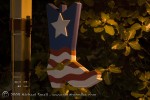
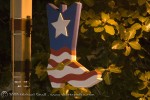
Click on the images to see a larger version. Then go out and take your camera off ISO auto and experiment.
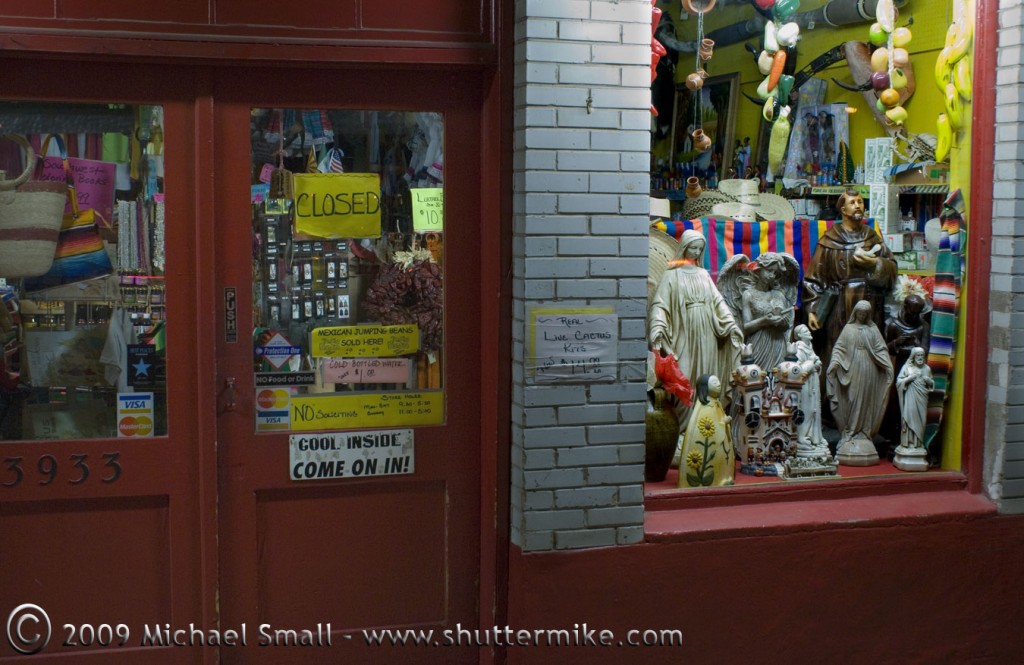
Colorful Shop Window
Downtown Scottsdale, AZ
f/6.3 – 0.3 sec – ISO 400 – Focal Length 28 mm
This was part of my experimentation with ISO. If you look closely the noise is on the high end, especially in the solid red doors. I could probably have reduced that by bringing the ISO down to 200 and increasing the shutter speed a few stops. Something to try next time.
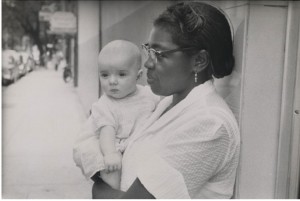 The photography of Robert Frank has often been called revolutionary. He worked at a time when the classical rules of photography were rarely departed from, yet he departed. NPR says he “…single-handedly altered the course of photography…” His book, The Americans, was a documentation of an all too familiar subject, American life. But Frank’s departure from the rules that dominated how a photograph was composed and presented up until that point made his work and book stand out. Check out NPR’s coverage of Robert Frank and a new exhibit of his work at New York’s Metropolitan Museum of Art by clicking here. (I wish I was closer to NY!)
The photography of Robert Frank has often been called revolutionary. He worked at a time when the classical rules of photography were rarely departed from, yet he departed. NPR says he “…single-handedly altered the course of photography…” His book, The Americans, was a documentation of an all too familiar subject, American life. But Frank’s departure from the rules that dominated how a photograph was composed and presented up until that point made his work and book stand out. Check out NPR’s coverage of Robert Frank and a new exhibit of his work at New York’s Metropolitan Museum of Art by clicking here. (I wish I was closer to NY!)
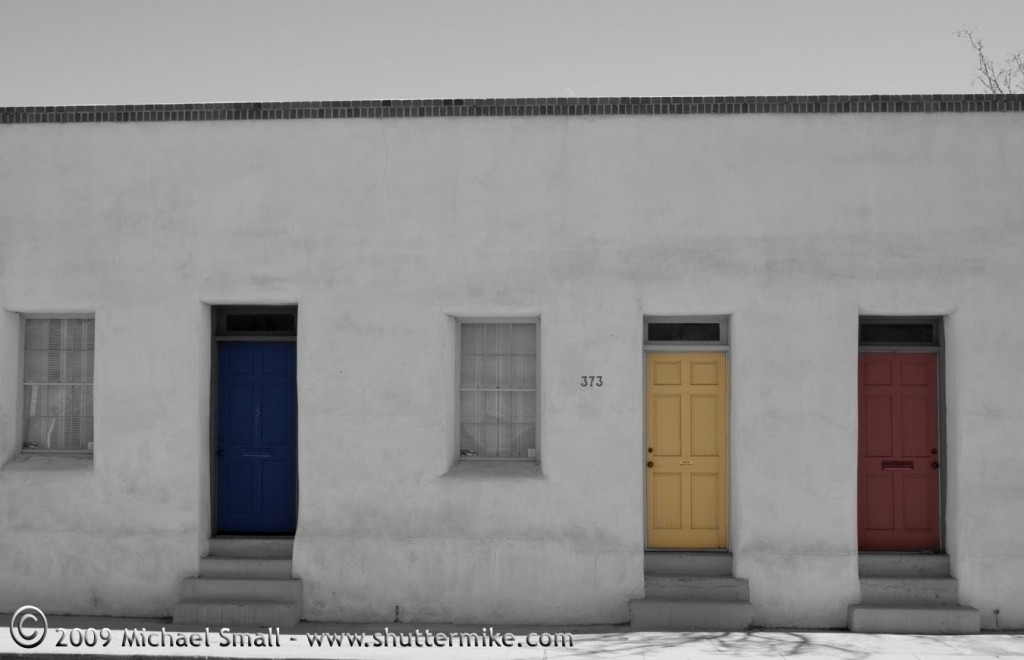
Barrio Historico Colored Doors
Tucson, AZ
This is another version of the photo of the day from yesterday. I did some Photoshop editing first by turning the original photograph into a black and white photo. Then I found some great, easy to follow instructions for colorizing portions of a black and white image in Photoshop at emptyeasel.com. I think this is a Photoshop technique I will have to play around with some more on other photos. I really like the end result.










